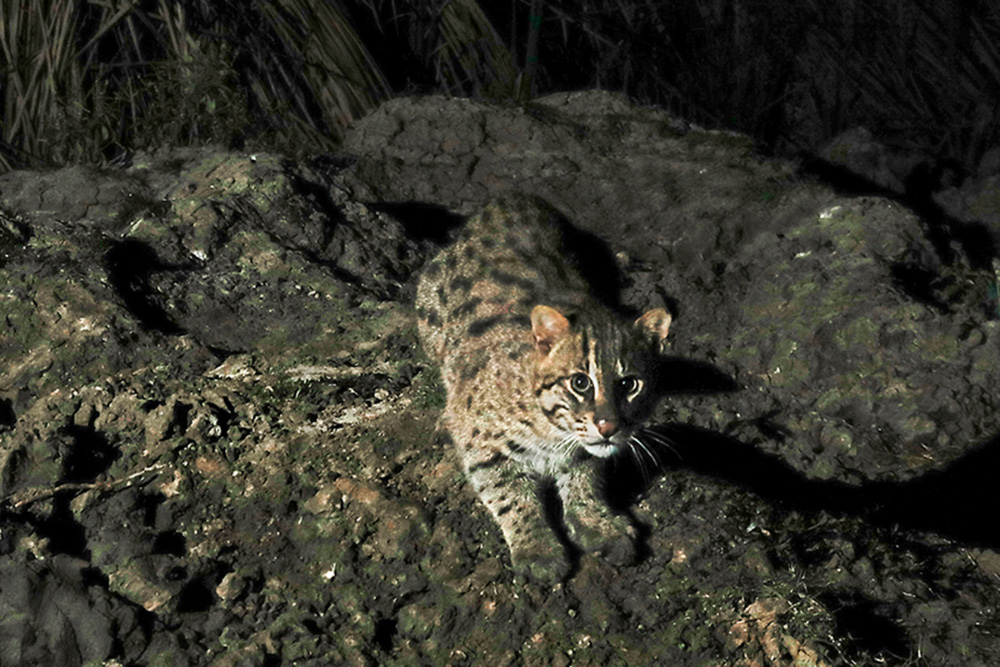
Domestic cats may love to eat fish, but they certainly won’t venture into the water to catch one. Among their wild cousins, however, the flat-headed cat (Prionailurus planiceps), which is endemic to Southeast Asia, is known to catch fish both from the shore and by fully submerging its head into the water. Closer home, we have a cat that is even more adept in the wetlands, with its water repellent fur and partially webbed feet – the fishing cat (Prionailurus viverrinus), a native of South and South-east Asia. It is an excellent swimmer, both over and underwater, and three-fourths of its preferred food is fish, which it hunts with great capability. The rest of its diet comprises rats and mice, small birds, insects, reptiles, and amphibians. It is primarily nocturnal, generally solitary, and not easily seen.
Hunting strategy
Using a participatory science and conservation initiative called ‘Know Thy Neighbours’, residents of villages in Odisha and West Bengal were equipped with camera traps to monitor fishing cats in their locales. Through this initiative, we managed to acquire a lot of video footage of the cats on their nightly prowls and were able to observe their hunting strategy.
We found that a fishing cat will wait patiently for fish to show near the water’s edge. If no fish are detected after sitting for a while, it will head off to scout other nearby water bodies, before coming back to take its position at the first water body. It will continue doing this till it detects prey. When it spots a fish, it will sometimes try to get closer using floating aquatic vegetation as cover and pounce only when it seems very sure of a catch. Even so, we found that these skilled predators are successful in catching fish only about 50% of the time.
A ‘sit-and-wait’ approach to hunting prey is adopted by many felids, helping them to conserve their energy. The added advantage for a fishing cat is that a fish caught and carried to the shore dies quickly, and can be consumed easily, with no feathers to get rid of or fur to process.
Citation: Ganguly, Divyajyoti & Adhya, Tiasa. (2020). How Fishing Cats Prionailurus viverrinus fish: Describing a felid’s strategy to hunt aquatic prey. 10.1101/2020.04.24.058925.

 CI is a non-profit, non-commercial portal that aims to facilitate wildlife and nature conservation by providing reliable information and the tools needed to campaign effectively.
CI is a non-profit, non-commercial portal that aims to facilitate wildlife and nature conservation by providing reliable information and the tools needed to campaign effectively.
Chosen as 'Picture of the Week'
This medium-sized cat is listed as Vulnerable on the IUCN Red List. It is threatened by the rapid loss of its wetland habitat as well as retaliatory killing in some places for perceived competition with local fishers. Females are known to range over areas of 4-6 sq km while males are known to range over 16-22 sq km.